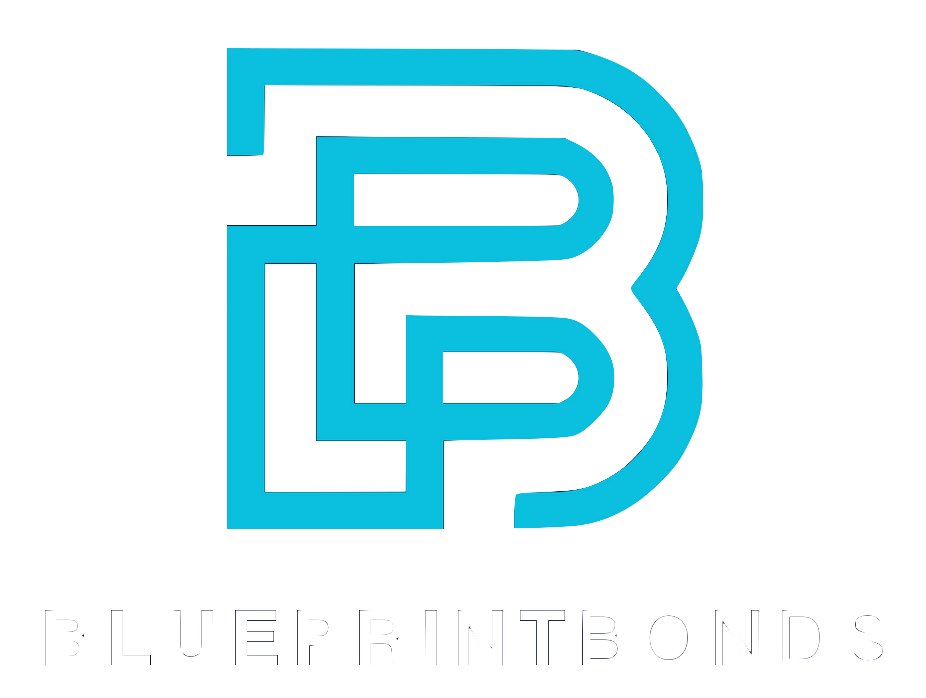In recent years, the construction and development landscape has witnessed a notable increase in the demand for surety bonds, especially among private owners. This trend is expected to continue gaining momentum throughout 2025, driven by a combination of economic factors, regulatory changes, and the proven benefits of bonding in managing project risks. As private owners seek greater assurance and financial security in their projects, understanding why bonds are becoming a standard requirement can offer valuable insights for contractors, developers, and stakeholders alike.
One of the key indicators of this shift is the strong performance of programs like the U.S. Small Business Administration's Surety Bond Guarantee Program, which supported over 2,000 small businesses in fiscal year 2024, facilitating more than $9.2 billion in contract value and contributing to over 46,000 jobs. This program's success highlights the growing reliance on bonding as a tool to enable smaller enterprises to compete for and secure larger contracts according to the U.S. Small Business Administration.
Understanding the Role of Surety Bonds in Private Projects
Surety bonds act as a financial guarantee that contractors will fulfill their contractual obligations. For private owners, this means reduced risk of project delays, cost overruns, or contractor defaults. Bonds provide a safety net that protects the owner’s investment, ensuring that if the contractor fails to perform, the surety company will step in to complete the project or compensate the owner. This mechanism not only safeguards the financial interests of the owners but also fosters a more reliable and trustworthy environment within the construction industry.
Beyond risk mitigation, bonds also serve as a signal of financial strength and credibility for contractors. Bonding companies typically require thorough vetting of a contractor’s financial health and track record before issuing bonds. This vetting process reassures private owners that bonded contractors are more likely to deliver quality work on time and within budget. Additionally, the presence of a surety bond can enhance a contractor's reputation, opening doors to more lucrative projects and partnerships, as clients are often more inclined to engage with contractors who are bonded.
Lower Default Rates and Faster Completion
Research underscores the tangible benefits of bonding. A 2022 Ernst & Young report found that bonded construction projects experience lower rates of contractor default compared to non-bonded projects. Moreover, in cases where defaults do occur, bonded projects incur lower completion costs and tend to finish faster. These advantages translate into significant savings and smoother project delivery for private owners, making bonds an increasingly attractive requirement. The assurance of financial backing not only alleviates concerns for the owner but also instills confidence in subcontractors and suppliers, who may be more willing to engage with a bonded contractor, knowing that their payments are secure.
This economic value is especially critical as projects grow in complexity and scale. With more at stake, private owners are prioritizing mechanisms that reduce uncertainty and protect their investments. The assurance provided by surety bonds aligns perfectly with this priority, explaining their rising popularity. Furthermore, as the construction landscape evolves with the integration of advanced technologies and sustainable practices, the need for reliable financial instruments like surety bonds becomes even more pronounced. These bonds not only serve as a financial buffer but also encourage contractors to adhere to higher standards of performance and compliance, ultimately leading to better project outcomes and innovations in the industry.
Market Trends Driving Increased Bond Demand
The surety market itself is on an upward trajectory, reflecting broader industry trends. The Insight Partners forecasts that the surety market will grow at a compound annual growth rate of 6.6%, reaching $31.85 billion by 2031. This growth is fueled by infrastructure development and the increasing prevalence of public-private partnerships, which often require bonding to safeguard public funds and ensure project completion according to The Insight Partners.
Private owners are also influenced by these market dynamics. As public projects increasingly demand bonding, private sector owners are adopting similar standards to ensure their projects meet rigorous financial and performance benchmarks. This alignment helps maintain competitive parity and reduces risk exposure. Furthermore, the growing emphasis on sustainability and green building practices is prompting owners to seek out contractors who can demonstrate not only financial stability but also a commitment to environmentally responsible practices. This trend is leading to a more holistic approach in project planning, where bonding requirements are seen as part of a broader strategy to ensure project viability and success.
Increased Bonding Limits Empowering Larger Projects
Another significant development encouraging the use of bonds is the recent increase in bonding limits by the U.S. Small Business Administration. Bonding limits for small businesses have been raised from $6.5 million to $9 million for all projects, and from $10 million to $14 million specifically for federal contracts. This change enables small and medium-sized enterprises to bid on and secure larger contracts, which in turn drives demand for bonds in private projects as well according to General Indemnity Group.
These increased limits not only support business growth but also enhance project confidence for private owners. Knowing that contractors have access to higher bonding capacities allows owners to pursue more ambitious projects with reduced
financial risk. Additionally, this shift is fostering a more competitive landscape where smaller firms can compete with larger contractors, potentially leading to innovative solutions and diverse approaches to project execution. As these smaller enterprises gain access to larger contracts, they are also more likely to invest in technology and skilled labor, further enhancing the overall quality and efficiency of construction projects across the board.
Financial and Operational Benefits for Private Owners
Private owners benefit from surety bonds in multiple ways beyond risk mitigation. Financially, bonds improve liquidity and cash flow management by reducing the need for large upfront retainers or escrow accounts. Instead, the surety company assumes the financial risk, allowing owners to allocate capital more efficiently. This financial flexibility can be particularly advantageous for small to medium-sized enterprises, which often operate with tighter budgets and less access to extensive credit lines. By leveraging surety bonds, these businesses can engage in larger projects without the burden of tying up significant funds, ultimately fostering growth and expansion.
Operationally, bonds help keep projects on schedule. Contractors backed by surety bonds are incentivized to perform well to maintain their bonding capacity and reputation. This dynamic reduces the likelihood of delays caused by financial distress or poor management. Furthermore, the presence of a surety bond can enhance the overall project management process, as it often requires contractors to adhere to stricter financial and operational standards. This ensures that only qualified contractors are chosen for projects, thereby increasing the likelihood of successful completion within the stipulated time frame.
Real-World Impact: A Developer’s Perspective
Commercial developers have shared firsthand accounts of how bonds have saved projects from financial pitfalls. One developer remarked, "The bond saved us from a financial nightmare and kept the project on schedule." This testimonial highlights the practical value bonds offer in safeguarding timelines and budgets, which are critical concerns for private owners according to Palmetto Surety. Additionally, many developers note that having surety bonds in place can enhance their credibility with stakeholders, including investors and clients. When stakeholders see that a developer is bonded, it instills confidence in their ability to deliver on promises, which can lead to more lucrative contracts and partnerships in the future.
Moreover, the competitive landscape of construction often necessitates a strong reputation for reliability and financial stability. Developers who utilize surety bonds can differentiate themselves from competitors who may not have the same level of financial backing. This competitive edge can be crucial in securing bids for high-profile projects, as clients are more likely to choose contractors who demonstrate a commitment to financial responsibility and project integrity. In this way, surety bonds not only protect the interests of private owners but also contribute to the overall health of the construction industry by promoting best practices and accountability among contractors.
Steady Demand and Industry Confidence in 2025
Despite market fluctuations, demand for bond insurance remains robust. In the first half of 2025, bond insurance penetration was recorded at 7.9%, consistent with the 7% to 8% range observed since 2021. This steady demand reflects sustained confidence in bonds as a reliable financial tool within the construction and development sectors according to Digital Insurance.
Experts in municipal market analytics also note that higher volumes of insured bonds correlate with better financial metrics for companies and improved liquidity for insured paper. This positive feedback loop encourages more private owners to require bonds, knowing that bonded contractors are financially stable and capable of delivering on their commitments. Additionally, the trend indicates a growing recognition of the importance of risk management strategies, as stakeholders increasingly prioritize financial security in their project planning.
Implications for Contractors and Private Owners
For contractors, the increasing preference for bonded projects means that securing surety bonds is becoming essential to remain competitive. Contractors must maintain strong financial health and a proven track record to meet bonding requirements and access lucrative private contracts. This has led many contractors to invest in financial management tools and training, ensuring they can present the necessary documentation to underwriters and demonstrate their reliability. As a result, the landscape is evolving, with a shift towards more transparent and accountable practices within the industry.
Private owners, on the other hand, gain peace of mind and greater control over project outcomes by incorporating bonding into their contract terms. This trend is likely to continue as owners seek to minimize exposure to financial and operational risks in an increasingly complex construction environment. Moreover, as the construction sector faces challenges such as labor shortages and supply chain disruptions, the assurance provided by bonded contractors becomes even more critical. Owners are not only looking for financial stability but also for partners who can adapt to changing conditions and deliver projects on time and within budget, reinforcing the bond between risk management and project success.
Conclusion: Why Bonds Are Becoming a Standard in Private Projects
The rising demand for surety bonds among private owners in 2025 is rooted in the clear financial, operational, and risk management advantages they provide. With proven benefits such as lower default rates, faster project completion, and enhanced contractor credibility, bonds offer a compelling value proposition that aligns with the priorities of today’s private owners.
Market trends, including increased bonding limits and steady insurance penetration, further support this shift. As private owners navigate a landscape of growing project complexity and financial uncertainty, surety bonds stand out as a vital tool to safeguard investments and ensure successful project delivery.
For contractors and developers, adapting to this evolving expectation by securing appropriate bonding will be key to accessing new opportunities and building lasting client relationships. Ultimately, the widespread adoption of bonds in private projects reflects a broader commitment to accountability, financial prudence, and quality assurance in the construction industry.




